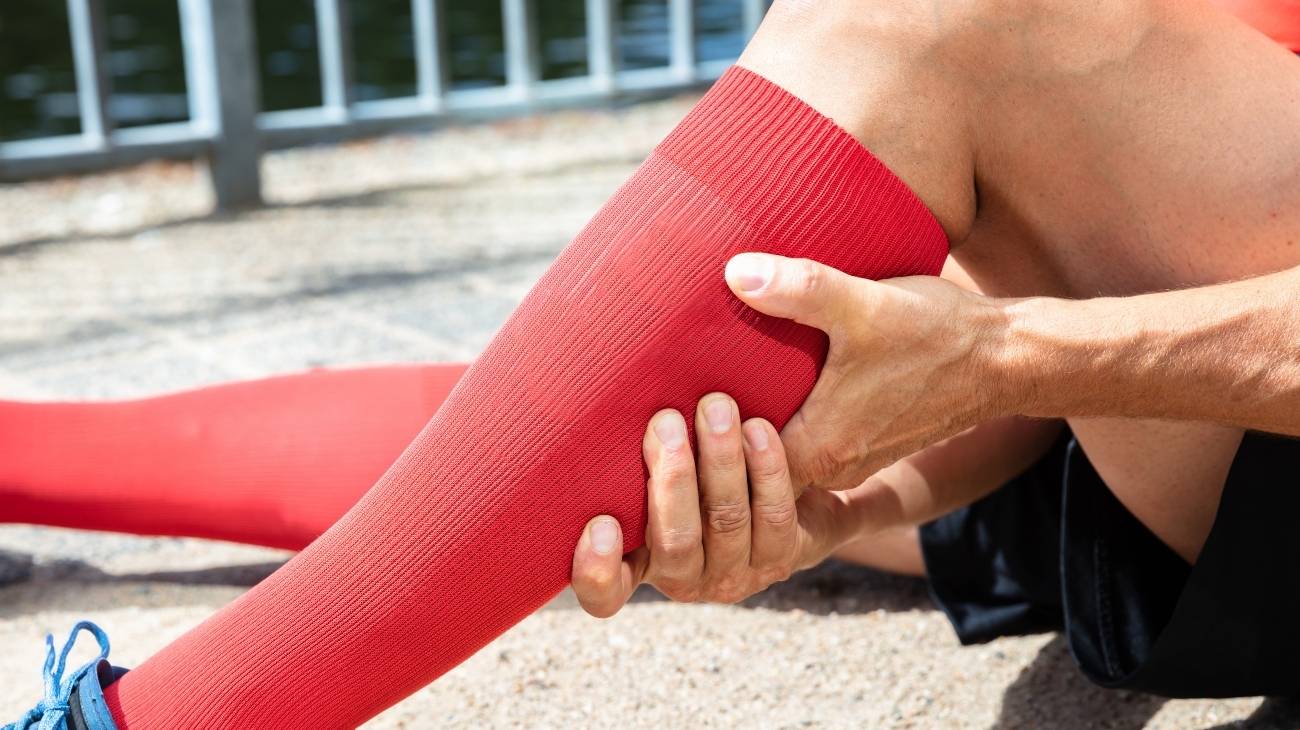Ligaments have the function of stabilising joints to prevent unexpected movement. However, due to various eventualities, these tissues are likely to exceed their maximum limit of elongation, resulting in partial or total rupture of the ligamentous portion.
In effect, a sprain or strain of the ankle is triggered which manifests a particular symptomatological picture. One of the most common types of sprains is that which occurs in the ankle area (especially on the outer side) and given its frequency, it is important to know how it can be treated with the help of a compression ankle brace.
What are the symptoms of an ankle sprain?
An ankle sprain is defined as an injury to the bands of tissue that help hold the bones of the ankle together, i.e. the ligaments located in that part of the lower limb. In general, this type of sprain occurs when the patient bends, twists or turns the joint sharply while walking or running and consequently stretches the ankle ligaments beyond their regular limit to the point of tearing.
Ankle sprain is distinguished as a sudden condition that accounts for about 25% of all sports-related injuries. Taking into account that, when diagnosing this pathology in which the ligaments are strained beyond their normal range of motion, it is essential to define the level of severity of the injury in order to be able to treat it accordingly.
The severity of a sprain is classified as follows:
- Grade 1: It is based on a slight distension of the ligaments that stabilise the bony fragments of the ankle. As a result, the pain and swelling that occurs is mild, and there is no associated joint laxity or any kind of tear in the ligaments.
- Grade 2: In this case, there is a partial rupture of the ligamentous portion of the ankle. The pain is more intense, the inflammatory process is more evident, and there is also deformation and discolouration of the skin (bruising). In addition, there is a slight joint instability.
- Grade 3: This is the most severe ankle sprain of all. Since it results in a complete rupture of the ligamentous tissue (or more than 50%), the pain, swelling, ecchymosis and deformity are more pronounced. Apart from this, the affected ankle shows great instability and functional impotence of the joint is observed.
The causes and risk factors that motivate the manifestation of a malleolus sprain are:
- Suffering a sudden fall resulting in twisting of the ankle.
- Falling wrongly after turning or jumping.
- Receiving a direct blow.
- Experiencing a hard stomp from another person.
- Walking on an uneven surface or a field in poor condition.
- Practising certain sports skills (football, basketball, tennis, running, etc.).
- Wearing unsuitable footwear (high heels, worn out, wrong size, etc.).
- Being overweight or obese.
- Having a lack of strength or flexibility in the ankles.
This injury presents with the following signs and symptoms:
- Prominent pain in the affected joint: which increases when the patient supports his or her body weight on the foot.
- Sensitivity to pressure and touch: This means that there is also discomfort or discomfort when the ankle is pressed or touched.
- Inflammation or swelling: Both on the injured ankle and on the lateral side, a noticeable swelling can be observed.
- Bruising or change in skin colour: There may be redness of the area or some ecchymosis.
- Limited range of motion: This restricts activity to the outside of the malleolus.
- Joint instability: This increases the difficulty in keeping the injured ankle stable and therefore it is not possible to rest it on any surface or walk normally.
- Clicking or popping of the joint: This usually occurs at the instant the ankle sprain occurs.
- Other symptoms: Chronic ankle pain, permanent joint instability and arthritis in the area.
Bestseller
What are the benefits of using a compression ankle brace to treat an ankle sprain?
After diagnosing the ankle sprain based on its cause, its degree of severity and its symptoms, the specialist doctor will be able to establish a treatment adapted to each patient in order to speed up the recovery process in the shortest possible time.
To promote a faster recovery, the healthcare professional will recommend physiotherapy treatment to regain mobility. Among these types of aids, one of the best alternative therapies is compression therapy.
Adjustable or compression ankle sleeves are elastic garments that are ergonomically and therapeutically designed to help treat persistent pain or discomfort in this area of the lower limbs.
These garments are characterised by the following benefits:
- Instant pain relief.
- Reduce swelling due to the support they provide.
- Improve blood circulation to provide rapid recovery.
- Protect the ankle to prevent the manifestation of a more acute injury.
- Minimise muscle fatigue in the affected area.
- Offer greater stability and comfort to the ankle.
- Transfer warmth and prevent cold in the afflicted region to produce a sedative effect.
- They help to limit the movement of the ankle with the aim of preventing further aggravation of the ailment.
What type of sports ankle braces are best for improving ankle sprains?
In the case of ankle sprains, it is recommended to choose a specific sports ankle brace that guarantees all the benefits of compression therapy. Although it is essential to select an ankle brace according to the level of severity of the sprain in order to immobilise the ankle to a lesser or greater degree, it is certain that there is a model suitable for speeding up the recovery process regardless of the degree of the sprain in the area.
It is known as a "sports compression ankle brace" and is characterised by its elasticity designed to favour sports practices (thanks to its mobility) and to reinforce the ankle joint in case of sprains or tears. The sports ankle brace is made of a high quality, breathable and seamless compressive material that has the ability to offload, stabilise and support the ankle after an injury.
Its main advantages are as follows:
- Produces an improvement in blood circulation.
- Exercises a continuous compressive massage to provide relief.
- Eliminates muscle fatigue.
- Provides greater stability to the ankle joint.
- Ensures comfort and safety for daily activities and/or exercise routines.
- Provides significant protection to the ankle and adjacent parts of the ankle.
- Prevents the manifestation of discomfort after injury.
- Favours the absorption of moisture to avoid unpleasant odours.
















